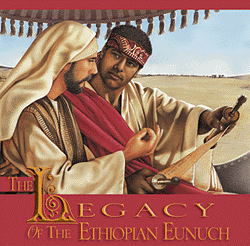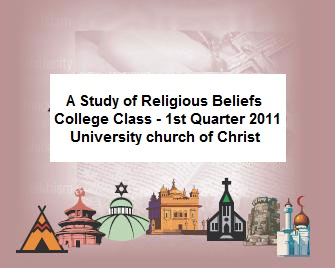Home | About Us | Directions | Bulletins | Sermons & Audio | Cross Of Christ Studies | Classes | Student and Parent Resource Page | Dangers Facing the "Non-Traditional"
Are the Gospels Part of the New Testament?
by Wayne Jackson
Jesus Christ taught that a person who divorces his or her marital companion and then marries another is living in a state of adultery—unless the divorce was initiated by an innocent victim whose trust had been violated by the sin of fornication (see Mt. 19:9; cf. 5:32).
The implication of this statement, of course, is this. The innocent victim does have the right to sever the breached marital union—by means of divorce. And should the victim so choose, he or she has been granted the privilege of entering a new union.
One rather bizarre quibble that attempts to negate the right of remarriage (under any circumstance) alleges that the affirmation of Matthew’s Gospel cannot be employed to justify a second union following divorce. The reason offered in defense of this notion is that the “Gospel accounts” allegedly are not a part of the New Testament! Supposedly, they represent Old Testament legislation, hence the testimony of the four Gospel records is irrelevant to the “remarriage” controversy unless the “divorce” concession is specifically replicated in the Acts-through-Revelation portion of the New Testament.
The novelty of this theory is demonstrated by the fact that it finds virtually no support by competent Bible scholars. The fallacy of the dogma may be demonstrated in several ways.
The New Testament is perfectly clear in its teaching that, commencing with the ministry of John the Immerser, a new era of instruction was being progressively implemented by divine authority. This time frame constituted a “transitional” period. During these days, certain instructions pertaining to the coming kingdom of Christ were taught by the Lord and his apostles. Of course, the formalities of the Mosaic regime were still in force technically, and would remain so until the Law was finally “nailed to the cross” (Col. 2:14; cf. Eph. 2:14-15).
For example, Jesus declared: “The law and the prophets were until John: from that time the gospel of the kingdom of God is preached, and every man enters violently into it” (Lk. 16:16).
Though this is not the place for a detailed exegesis of this passage, the text clearly indicates that a preparatory course of instruction, in view of the approaching kingdom, was initiated by the ministry of John. That new body of information contained many truths that would become applicable and obligatory with the inauguration of Christ’s regime, as such commenced on the day of Pentecost.
To contend that the teaching within the Gospel accounts is not applicable to those of the Christian age would reflect a manifest absurdity. Christ taught, for example, that men must satisfy the conditions of the “born again” operation in order to enter the kingdom (Jn. 3:3-5).
That this process had an after-Pentecost application is obvious from the following facts. The Lord’s kingdom did not arrive until Pentecost (Mk. 9:1; Acts 1:8; 2:4), and the saints of the post-Mosaic period throughout the Middle East had undergone this “birth” procedure in obtaining their salvation (cf. 1 Pet. 1:1-2).
Hence, the “new birth” procedure taught by Christ in the “Gospels” had a post-Gospels application.
Then consider the following admonition from the Son of God.
“And if your brother sins against you, go, show him his fault between you and him alone: if he hears you, you have gained your brother. But if he hears you not, take with you one or two more, that at the mouth of two witnesses or three every word may be established. And if he refuses to hear them, tell it to the church: and if he refuses to hear the church also, let him be unto you as the Gentile and the publican (emphasis added).”
Here is a context that can have no application until the day of Pentecost and the establishment of the church. This fact alone destroys the baseless assertion that nothing in the Gospel narratives is applicable after the advent of the Christian age (unless repeated in Acts through Revelation).
Finally, the context of Matthew 19:3ff makes it absolutely clear that the Lord’s teaching regarding divorce and remarriage was not a part of the law of Moses. In fact, Christ contrasts his impending law with that of the previous regime.
Under the Mosaic system, loose practices relative to divorce were permitted due to the “hardness” of the nation’s hearts. Jesus noted, however, “but from the beginning it has not been so” (v. 8). The divine ideal had never changed, and in the coming Christian age the laxness of the previous administration was to be terminated, being replaced by a loftier code of marital conduct.
And so Jesus declared, “And I say unto you, whosoever shall divorce his wife, except for fornication, and shall marry another, is committing adultery: and he who marries her when she is divorced is committing adultery” (v. 9).
This is Christian doctrine, not Mosaic legislation.
Other Articles by Wayne Jackson
Did the Early church Observe the Lord's Supper Daily?
Aid or Addition - What is the Difference?
The Divine Pattern of Acceptable Worship
![]() Would you like
others to read this article?
Would you like
others to read this article?








